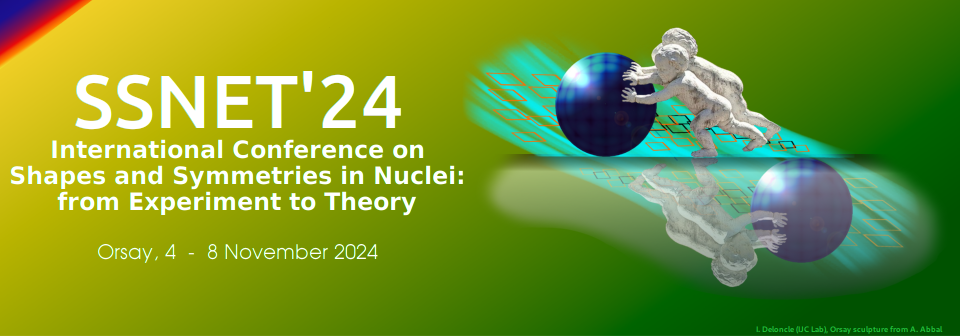Orateur
Description
Investigating the properties of individual nucleons leads to a more detailed exploration of
nuclear physics. We employ the relativistic mean-field model to study the behavior of nuclei and nuclear matter. Nuclear density is treated as a fundamental variable, and an energy function is employed to depict the interactions between the nucleons. The conventional Hartree-Fock Bogoliubov model is expanded relativistically (RHB) [1], offering a unified approach to nuclear mean-field and pairing correlations, enabling an accurate portrayal of ground and excited states of nuclei. This framework is further refined with density-dependent meson exchange (DDME) [2] functional, enhancing the description of asymmetric nuclear matter, neutron matter, and nuclei far from stability.
The region of the nuclear landscape abundant in neutrons showcases captivating phenomena,
including the formation of exotic structures like clusters and halos, the coexistence of various
shapes, phase transitions, and the suppression of shell effects [3,4]. Here, we try to analyze the
cluster structures and low-energy monopole strength in neutron-rich nuclei.
References
D. Vretenar, A. Afanasjev, G. Lalazissis, and P. Ring, Phys. Rep. 409, 101 (2005).
G. A. Lalazissis, T. Niki, D. Vretenar, and P. Ring, Phys. Rev. C 71, 024312 (2005)
T. Nakatsukasa, T. Inakura, and K. Yabana, Phys. Rev. C 76, 024318 (2007).
F. Mercier, A. Bjelčić, T. Nikšić, J.-P. Ebran, E. Khan, and D. Vretenar, Phys. Rev. C 103, 024303 (2021).

